Aventon has firmly established itself as a dominant force in the direct-to-consumer e-bike market, consistently delivering bikes that punch above their weight class. From the tech-laden Aventon Level.3 commuter with its 4G connectivity to the trail-crushing Ramblas eMTB, the brand has built a reputation for innovation that actually works in the real world.
At the heart of their success lies the Aventure series—a fat tire powerhouse that’s become synonymous with go-anywhere capability and serious torque. The latest evolution, the Aventure M, represents Aventon’s boldest move yet: swapping the proven rear hub motor for their new A100 mid-drive system that cranks out 100Nm of torque while maintaining that adventure-ready 400 lb payload capacity.
But here’s the real question: does this fundamental shift from hub to mid-drive actually deliver a better riding experience, or is Aventon fixing something that wasn’t broken? After extensive testing, we’re ready to break down whether the Aventure M earns its place as the new king of the fat tire mountain.
My Experience Riding The Aventon Aventure M E-Bike
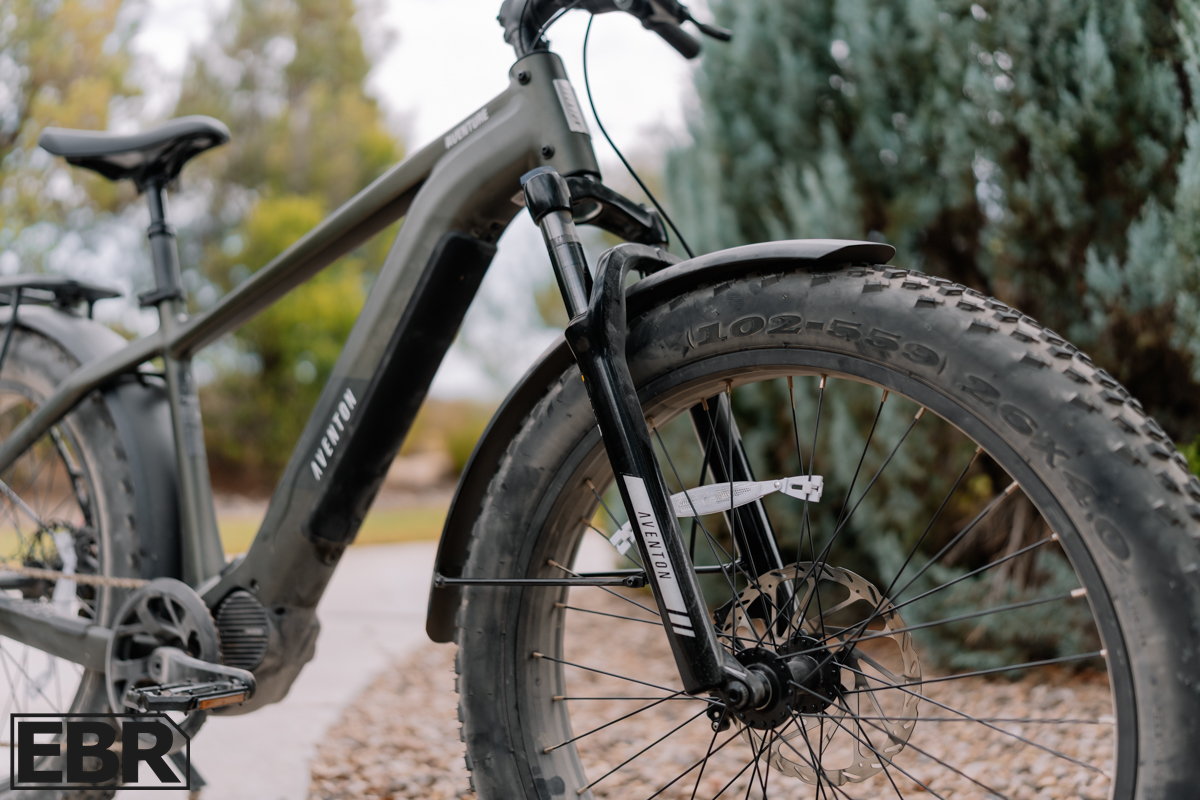
The Aventure M has serious curb appeal, and mine came in the “Camouflage” colorway that caught my eye as an Army combat vet. Just to set expectations—it’s not an actual camo pattern but more of a matte army green finish with subtle black branding accents. If that’s not your vibe, the Basalt grey and Pacific blue options offer the same premium matte finish. The new black block color accent for the Aventon logo on the downtube sounds busy when I describe it, but it’s actually very subtle and well-executed in person.
Comfort is where this bike really shines. The 50mm of travel in the suspension seatpost is constantly working, even on bumps you don’t see coming, and it goes a long way toward reducing or completely eliminating lower back impact—something I appreciate more as I get older. Coupled with those 4-inch wide tires and 80mm suspension fork up front, plus the relaxed geometry, comfort becomes a non-issue whether you’re cruising pavement or playing off-road.
The A100 mid-drive motor is the same unit Aventon uses in their Ramblas eMTB, pumping out 100Nm of torque with up to 750W peak power. That torque figure goes further than I expected—it makes this 73-lb bike with 4-inch tires feel surprisingly nimble and playful. The confident boost of torque moves all that rotational mass with ease, making it simply more fun than the rear hub version, which it should be considering the premium price.
But that premium isn’t just about the motor. You’re getting the full package: 1×10 Shimano Cues drivetrain with electronic shifting and auto shift mode, plus SRAM DB4 hydraulic disc brakes with 4-piston calipers, 200mm rotor up front, 180mm rear, and adjustable reach levers. The stopping power is exceptional for a bike this size—exactly what it should be but not always what you get.
The coolest feature during my rides was experimenting with the auto shifting and auto PAS modes. The bike handles shifting and power assist selection for you—all you do is pedal. The Aventon app lets you adjust cadence, torque, and sensitivity parameters to match your riding style, which makes a real difference in how the system responds. While it wasn’t perfect at predicting the right shift timing based on my pedaling or terrain, it was remarkably close. With OTA updates feeding data back to Aventon, this system will only get better. I’m calling it autopilot for e-bikes, and it’s about as close as we’re going to get to self-driving bikes, at least for now.
Range
Estimated Range (from Aventon):
- Up to 85 miles
Real World Range Test Results:
- Eco: 38 miles (11-12 mph average)
- Turbo: 104 miles: (18-19 MOH average)
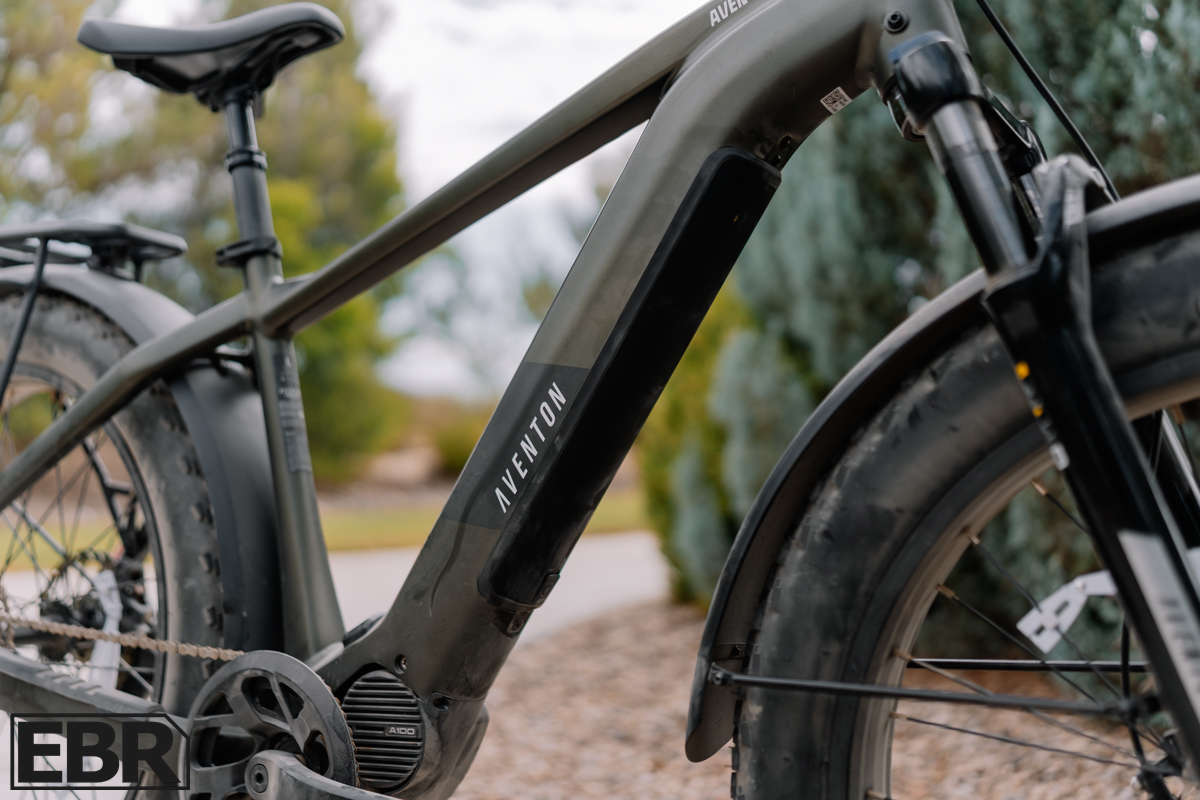
Testing conditions included mostly flat city fitness paths with minimal stops, a 180lb rider, and generally ideal circumstances—the kind of perfect storm that rarely happens in real-world riding.
As it turns out, the Aventure M actually exceeded Aventon’s conservative 85-mile estimate by a significant margin. While I can’t pinpoint exactly why—whether it’s the optimal testing conditions, the smart torque sensor programming, or the efficiency of that new A100 mid-drive—hitting over 100 miles on a single charge is genuinely impressive, even at turtle pace speeds.
The flip side tells the more realistic story. In Turbo mode, pushing 18-19 mph, you’re looking at around 38 miles before the battery calls it quits. For most riders who’ll spend their time somewhere between these extremes—cruising at 14-20 mph with varied terrain, stops, and real-world weight loads—expect range figures that fall comfortably within Aventon’s quoted numbers.
But here’s the deal: knowing you can squeeze over 100 miles out of this bike when all the right conditions align gives serious peace of mind for longer adventures. I’d say the Aventure M range estimations and my results are a strong win for anyone concerned about the ‘range anxiety’.
Power (Motor & Battery)
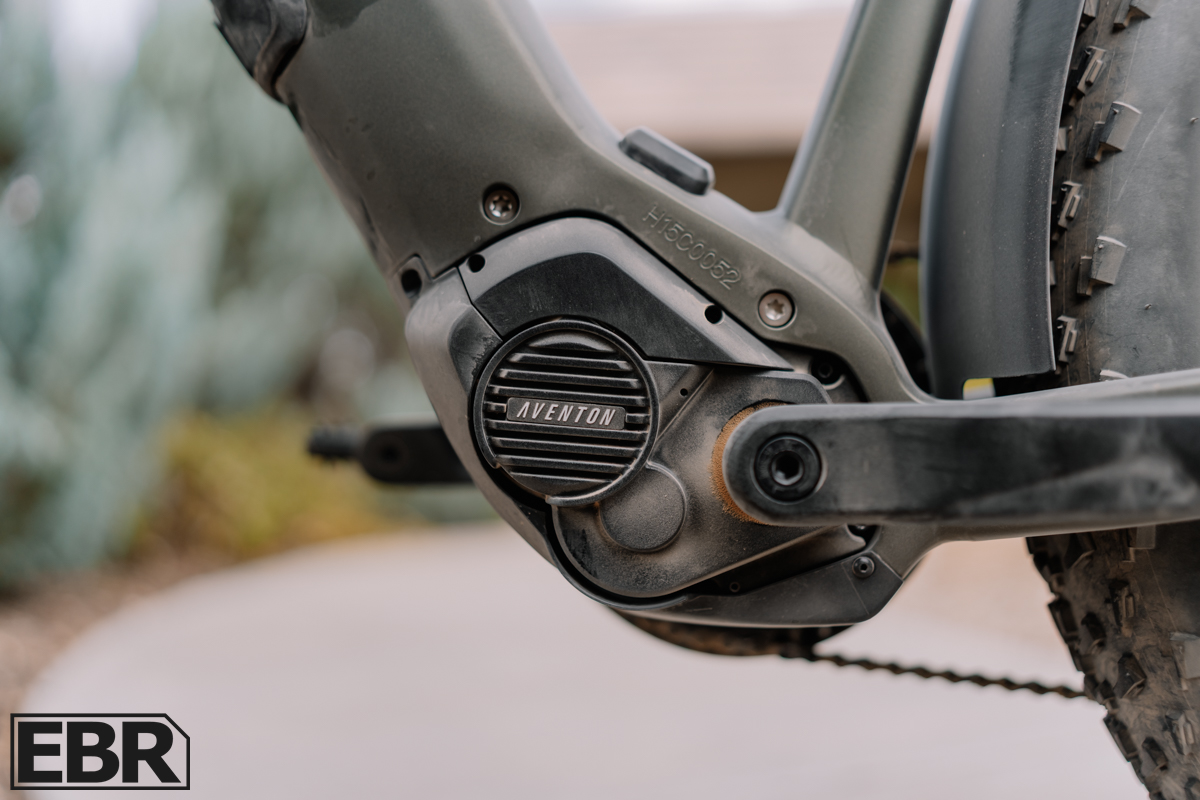
At the heart of the new Aventure M is just that—the ‘M’—which I can only assume is a nod to the first ever version of the Aventure series with a mid-drive motor. The A100 motor pumps 250W nominally, peaks at 750W, and pushes a hefty 100Nm of torque. While this motor is new for the Aventure series, it’s not new to Aventon as it’s the same unit powering the Aventon Ramblas eMTB, a bike I still have from my previous review.
One distinct takeaway I had about the A100 back then was just how much more fun and capable a bike becomes with torque numbers in the triple digits. In 2024, it was unheard of in the eMTB scene with larger competitors hovering around 50-60Nm—100 felt like a wild increase. But apparently I wasn’t the only one who thought this, as since then, nearly all new eMTBs have targeted the 100Nm to 115Nm mark. This shows it wasn’t a fluke or quick trend, but rather an industry pivot toward motor power that matches the needs of off-road bike riding, albeit with precise control of how it’s delivered.
So we know the A100 mid-drive was great in eMTBs that tend to stay near 50 lbs, but how would it fare in a heavier 73 lb bike like the Aventure M? Turns out, pretty darn well.
Power delivery is still smooth and controlled with the ability to get all the torque needed to conquer climbs with ease. The torque sensor is measured and controlled well as expected, matching its performance in the Ramblas, but it can do more than the Ramblas. This version ships as Class 1 (no throttle, limited to 20 mph) but can be Class 2 or 3 capable since they sell a separate throttle component with the wiring already in place—simple plug and play. In the Aventon app, you can unlock different class speeds.
It’s a good fit for a bike that can be as mild as running fenders, rear rack, lights, and turn signals for commuting or bikepacking, or as wild as stripping those accessories off and hitting some trails in full Class 1 mode. It’s got the power and flexibility to do either.
Components
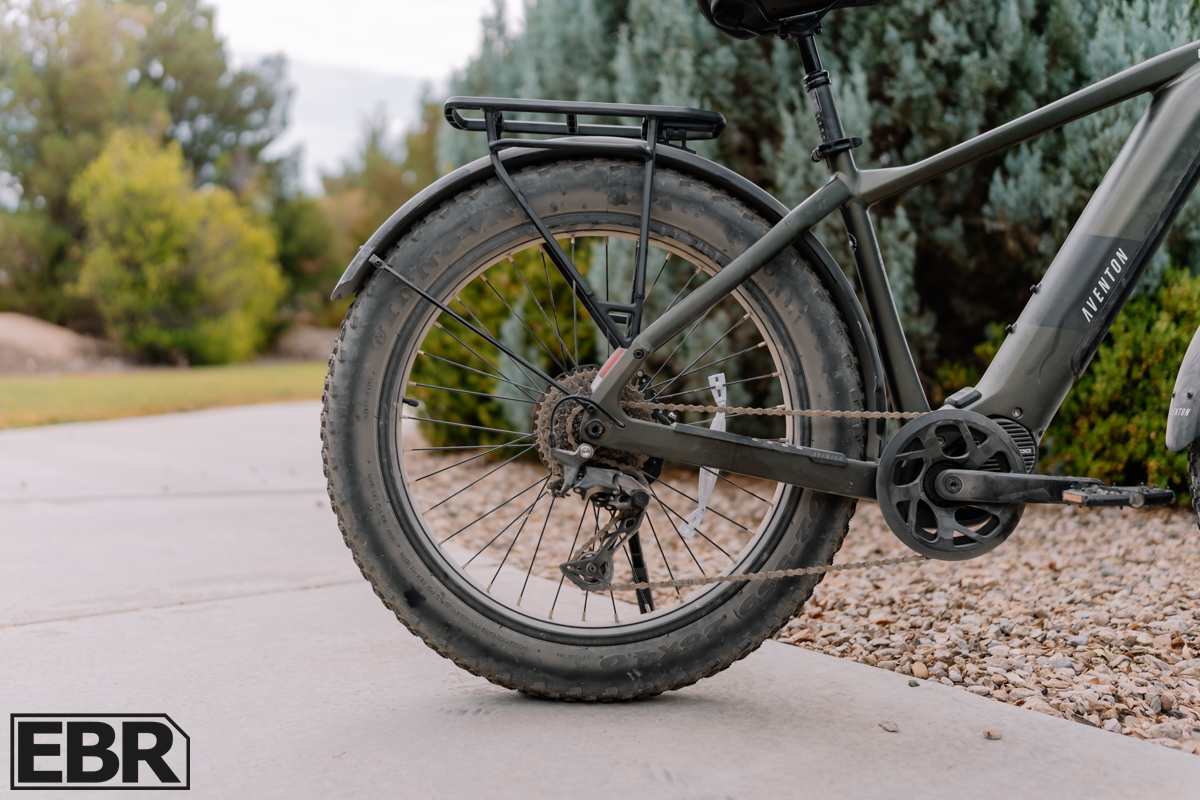
The Aventure M shares much of its DNA with the current Aventure.3, but the shift to mid-drive power has necessitated some key component upgrades that are worth understanding if you’re choosing between these two fat tire siblings.
In terms of the drivetrain and shifting, this is where the biggest difference lies. The Aventure M features a Shimano Cues 10-speed drivetrain with electronic shifting and Autoshift capability—a significant step up from the Aventure.3’s more basic 8-speed Shimano Altus setup. The M’s electronic shifting isn’t just a tech flex; it’s actually functional, allowing for smooth gear changes under power and the hands-free convenience of Autoshift when you want the bike to think for you.
While I wouldn’t normally praise a brand for throwing electronic shifting on a mid-drive motor as they tend to really tax a chain and cassettes lifespan due to sheer pressure of an e-bike shifting under load (Shifting while the motor is moving the bike via the chain), Aventon kept that in mind and this system is programmed to reduce power during the shift allowing for a slight delay in power in exchange for a much longer lasting drivetrain components.
Braking is covered amply with SRAM DB4 4-piston hydraulic disc brakes, so you’re getting identical stopping power regardless of which Aventure you choose. This is good news since both bikes pack serious weight and speed potential. This SRAM DB4 on the Aventure also features a 200mm front rotor with a 180mm rear to help with better cooling and pad longevity.
The comfort factor between both bikes is essentially identical, a front fork with 80mm of travel with lockout capability, as well as a suspension seatpost with 50mm of travel on both models. For longer rides over rough terrain, that rear suspension makes a noticeable difference in comfort.
The Aventure M rolls on 26×4.0″ Inova puncture-resistant fat tires mounted to aluminum rims, so traction and capability remain consistent across the lineup, while adding to the overall comfort.
Screen / User Interface / App
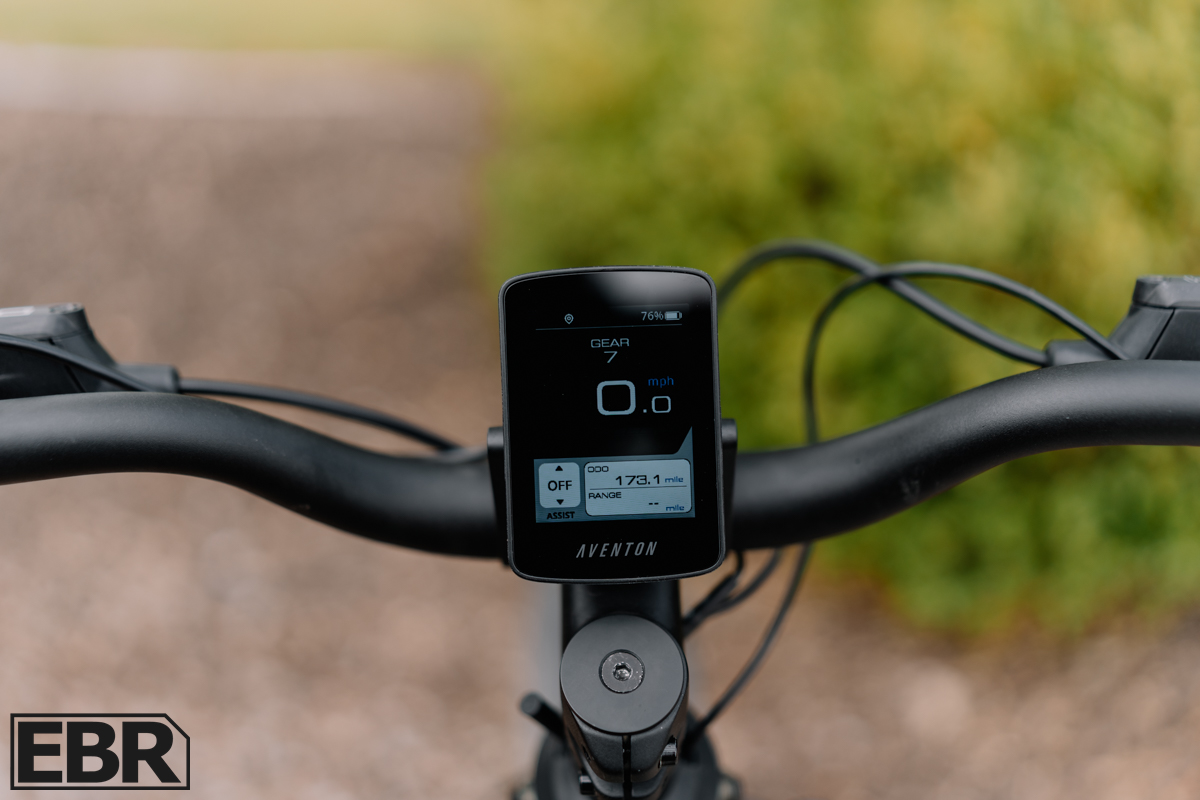
The Aventure M’s BC280 display is a solid step up from your typical e-bike computer, giving you all the ride data that actually matters. The color screen shows the basics like speed, battery level, and assist mode, but also digs into the good stuff—torque output, cadence, and power consumption. It’s the kind of information that helps you understand what’s happening under the hood and ride more efficiently.
Where things get really cool is how it connects with the Aventon mobile app through the bike’s ACU system using 4G and Bluetooth. This isn’t just another bike app that you’ll forget about—it’s basically mission control for your entire riding experience and bike security.
The GPS tracking keeps tabs on your bike’s location and shoots you alerts if it decides to take an unscheduled trip. The integrated rear wheel lock physically stops anyone from just rolling your bike away, and you can control it through the app or right on the display. Throw in geofencing and remote shutdown capabilities, and you’ve got a theft deterrent system that’s actually worth using.
The Ride Tune feature is where you can really make the bike yours. You can adjust how the torque kicks in, tweak the assistance levels, and dial in the pedal response across all three assist modes. Want a more mellow power delivery in Eco or more punch in Turbo? You can fine-tune it exactly how you like it.
Pretty handy that you can also switch between Class 1, 2, and 3 setups right in the app. Bike path today? Class 1. Commuting on roads? Class 3. Need throttle help? Class 2. It adapts to where you’re riding without any fuss.
The keyless battery system means no more fumbling with tiny keys—just unlock and pop out the battery through the display. Plus, your Aventure M battery plays nice with other Aventon bikes like the Level 3 and Abound series, which is pretty convenient if you’re in a multi-bike household.
Over-the-air updates keep things fresh by automatically downloading new features and improvements right to your display. It’s smartphone-level tech wrapped up in a bike that’s built to handle whatever adventure you throw at it.
Aventon Aventure M Model Options
The Aventure M keeps things straightforward with two frame sizes to cover most riders. The Regular frame fits riders from 5’3″ to 5’10”, while the Large accommodates taller folks from 5’10” to 6’4″. There’s a bit of overlap in the middle, so if you’re around that 5’10” mark, you’ve got some flexibility to choose based on your riding style—smaller frame for more agility, larger for a more stretched-out position.
Color-wise, you’ve got three solid options that all look pretty sharp: Basalt (a sleek dark gray), Camouflage (for those who want to blend into the trail), and Pacific (a nice blue tone). All three work well with the rugged adventure aesthetic Aventon is going for.
Out of the box, you’re getting some practical freebies that add real value. The rear rack, front to back lighting, and fenders all come standard, which is refreshing these days. The rack handles up to 55 lbs, so you can actually haul gear without worrying about it, and the fenders keep you clean when the trail gets messy.
For optional accessories, there’s an aftermarket throttle available if you want that extra boost without pedaling. The cross-model battery compatibility also means you could potentially grab a second battery for extended range, though that’s a pricey proposition.
But here’s the big decision most people will face: Aventure M versus the regular Aventure.3. Both are current models, both are fat tire adventure bikes, and both carry the same $2,699 price tag. The main difference comes down to mid-drive versus rear hub motor, plus the M’s electronic shifting and ACU tech features. If you prioritize natural pedaling feel, better climbing, and all that connected tech, the M makes sense. If you want proven simplicity and don’t need the bells and whistles, the Aventure.3’s rear hub setup is hard to beat.
Both bikes handle the same 400 lb total weight capacity, so you’re really choosing between riding feel and feature sets more than raw capability.
Is The Aventon Aventure M Worth Buying?
The Aventure M delivers on Aventon’s promise of a more sophisticated fat tire e-bike. The A100 mid-drive motor with 100Nm of torque feels premium and natural, especially when climbing, while the upgraded electronic shifting and Autoshift technology elevate the entire riding experience beyond typical e-bike drivetrains.
The real question isn’t whether the M is good—it’s whether the premium motor and drivetrain upgrades are worth it versus the Aventure.3. Both bikes share solid core components and tackle the same terrain with the same 400 lb payload capacity. The difference comes down to motor feel and shifting sophistication. The M’s mid-drive delivers that natural, bike-like pedaling response and effortless climbing, while the electronic drivetrain handles gear changes seamlessly. The Aventure.3 offers proven rear hub reliability if you prefer straightforward operation.
The Aventure M makes sense for riders who appreciate premium motor performance and will actually use features like Ride Tune customization, ACU connectivity, and Autoshift convenience. It’s ideal for someone wanting one versatile platform that handles daily commutes, weekend trails, and extended touring with equal capability.

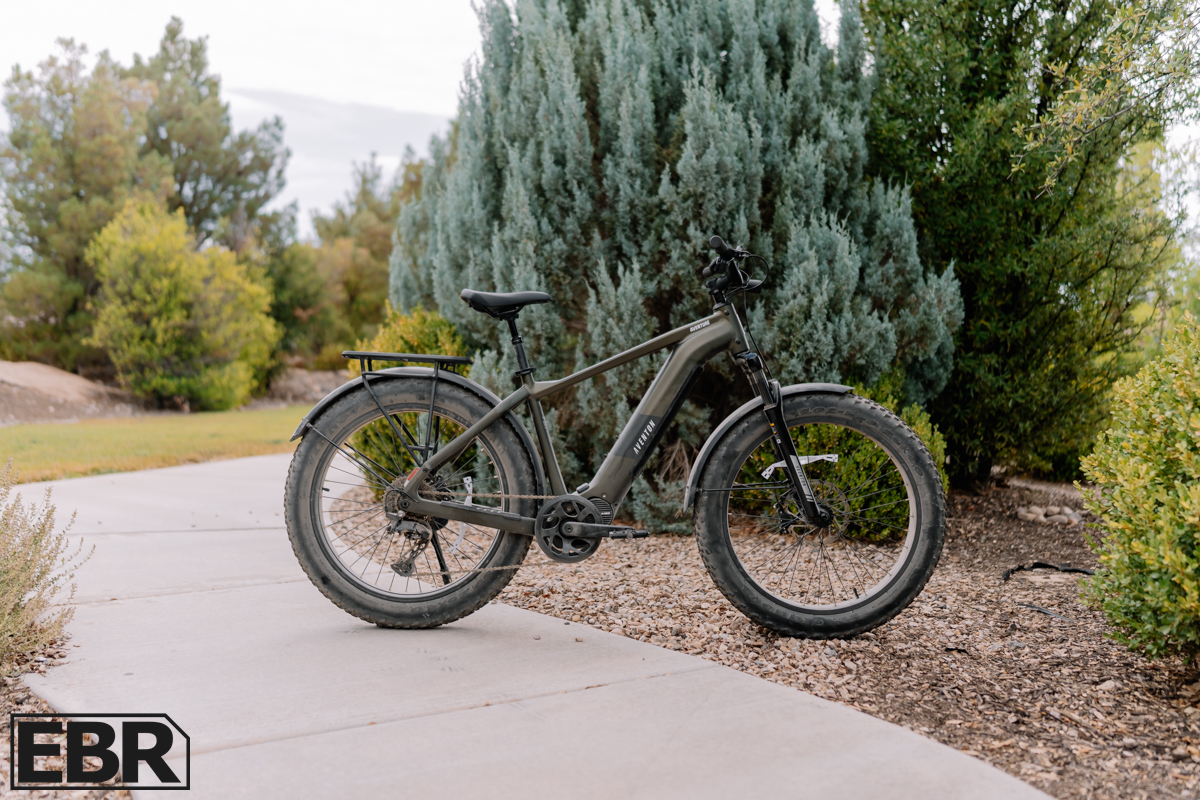

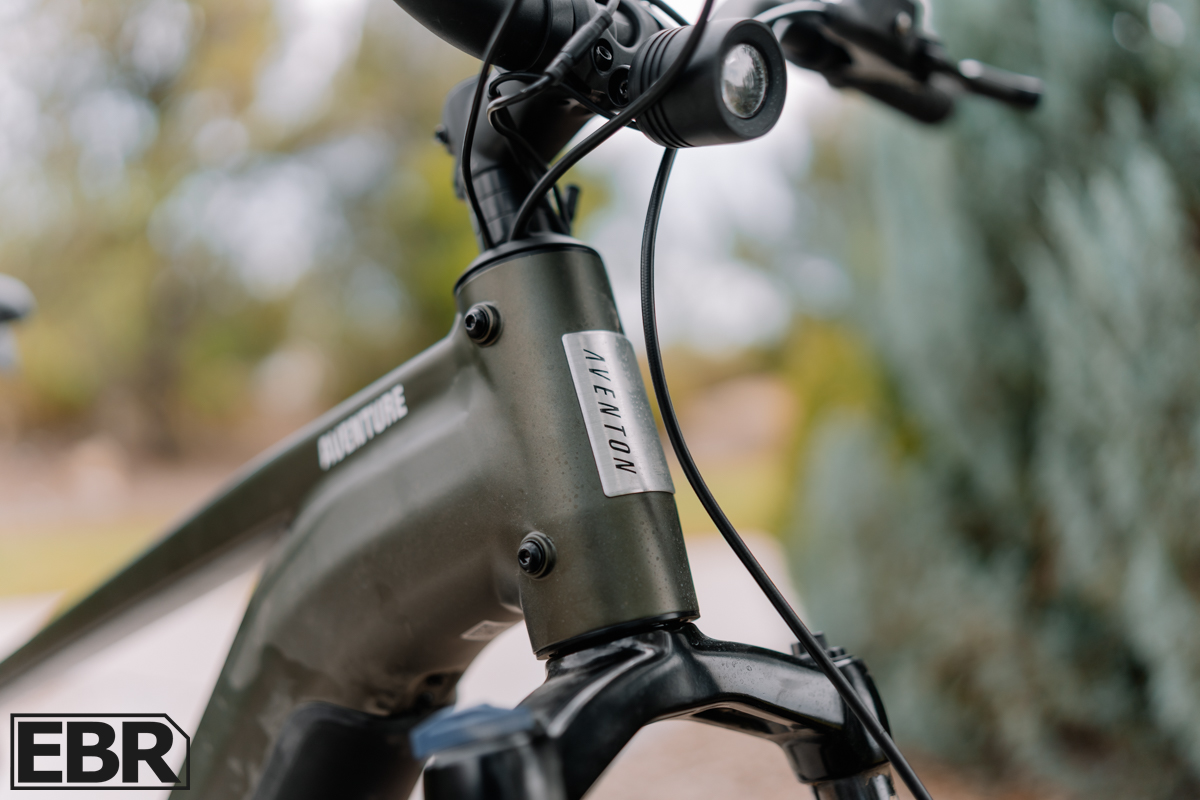
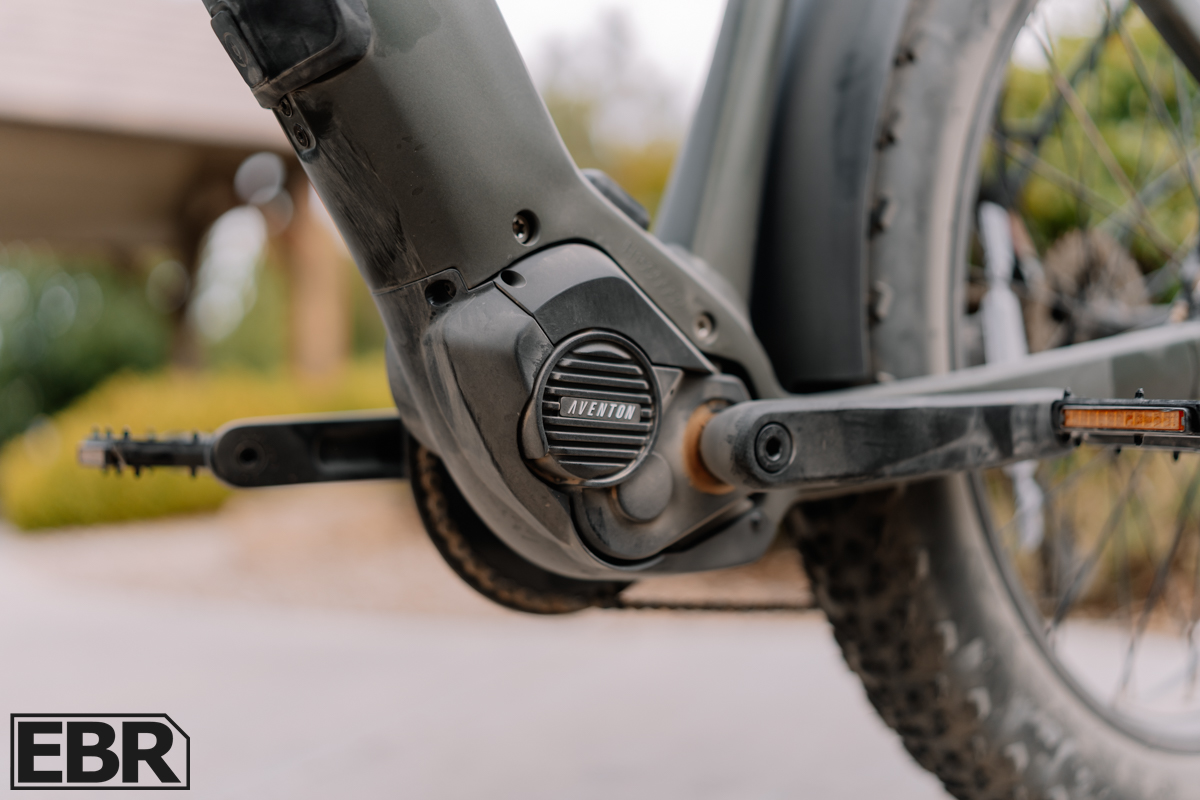
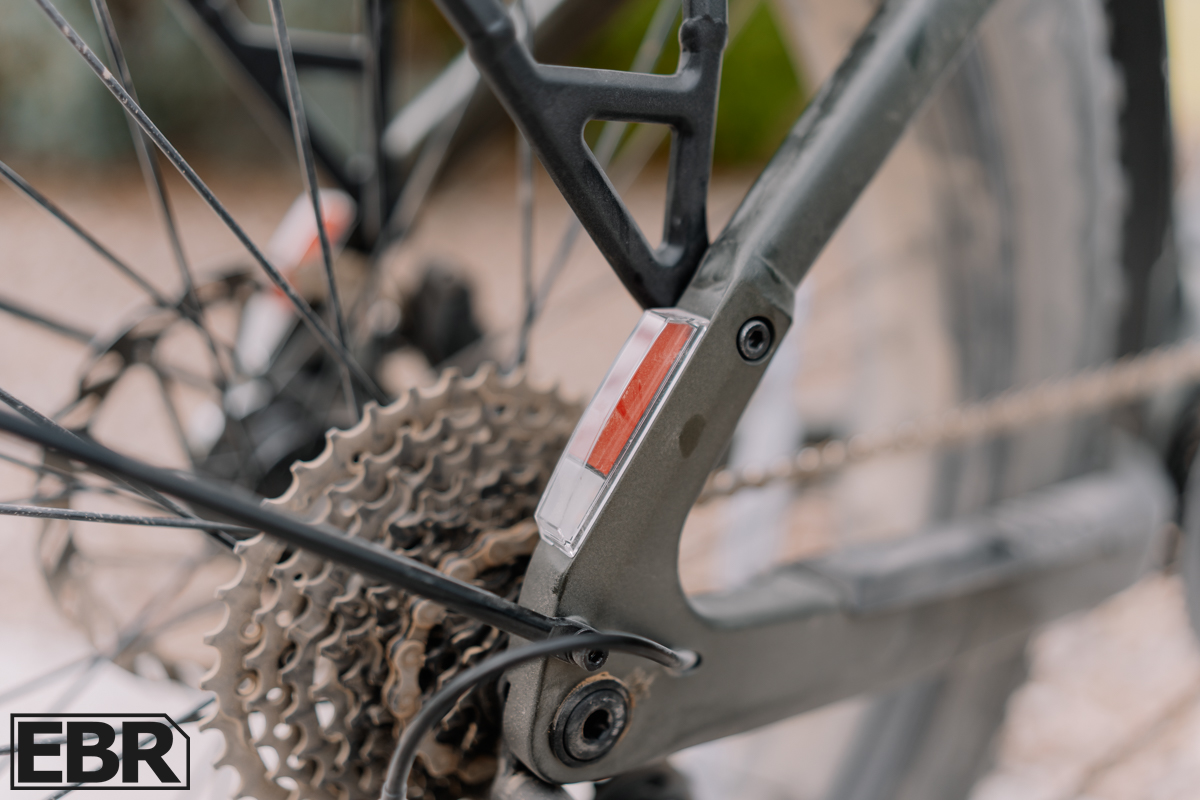
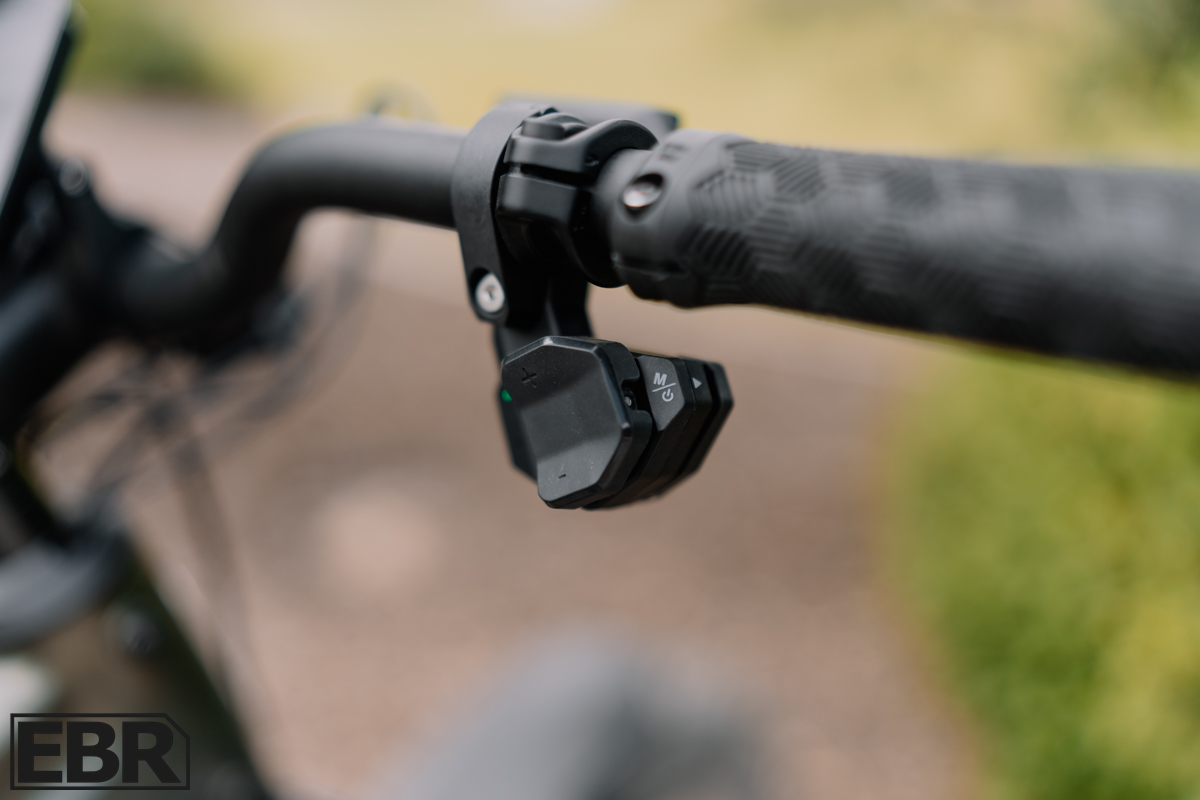

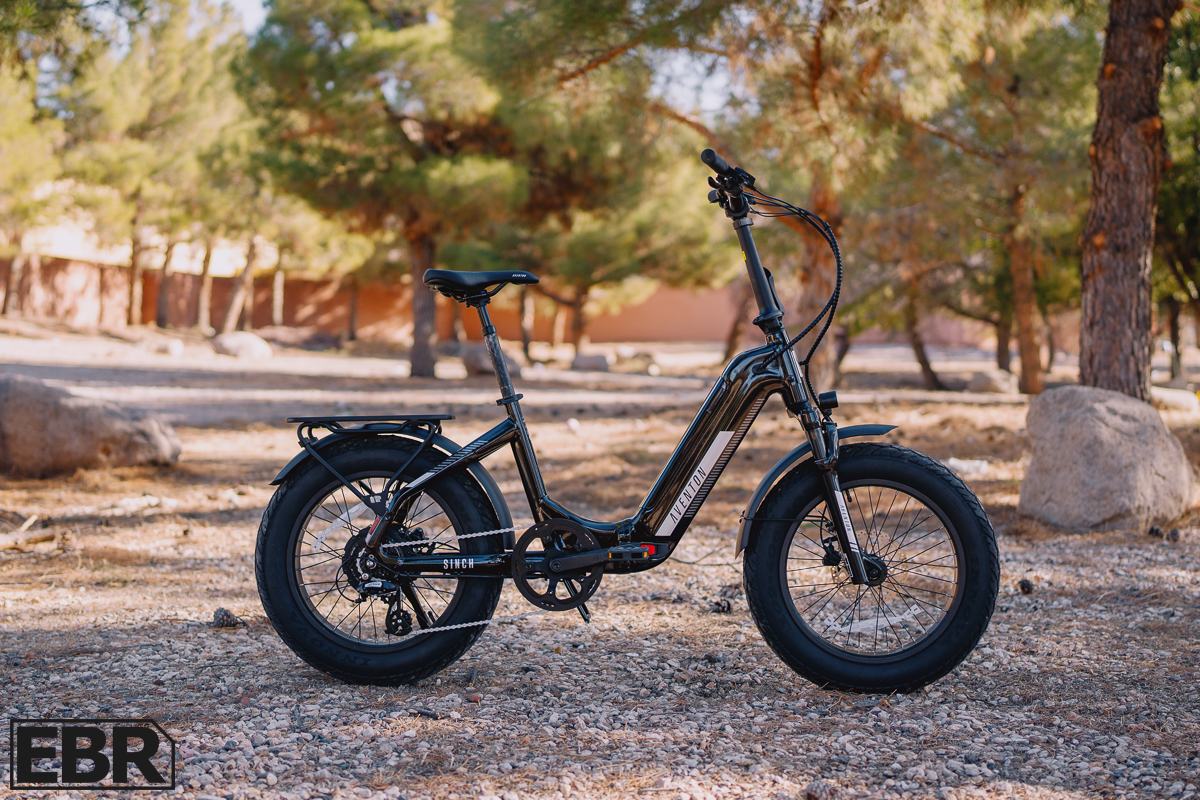
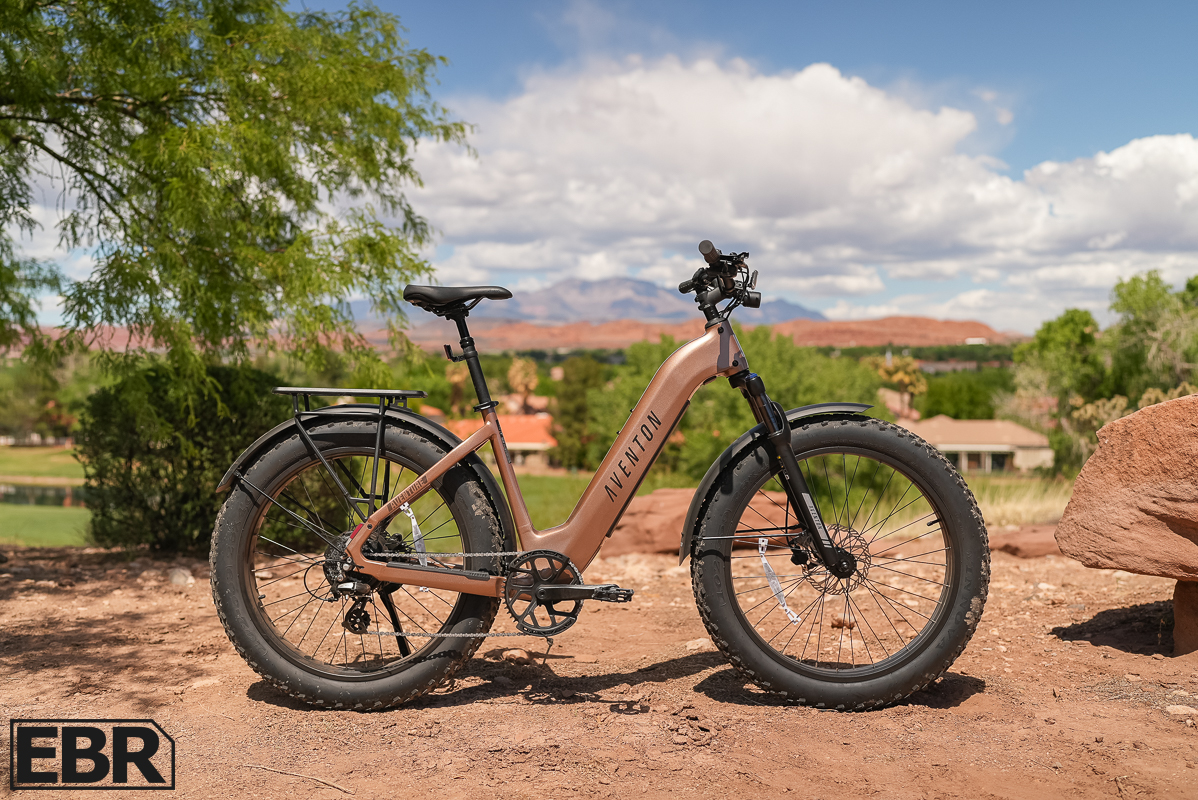
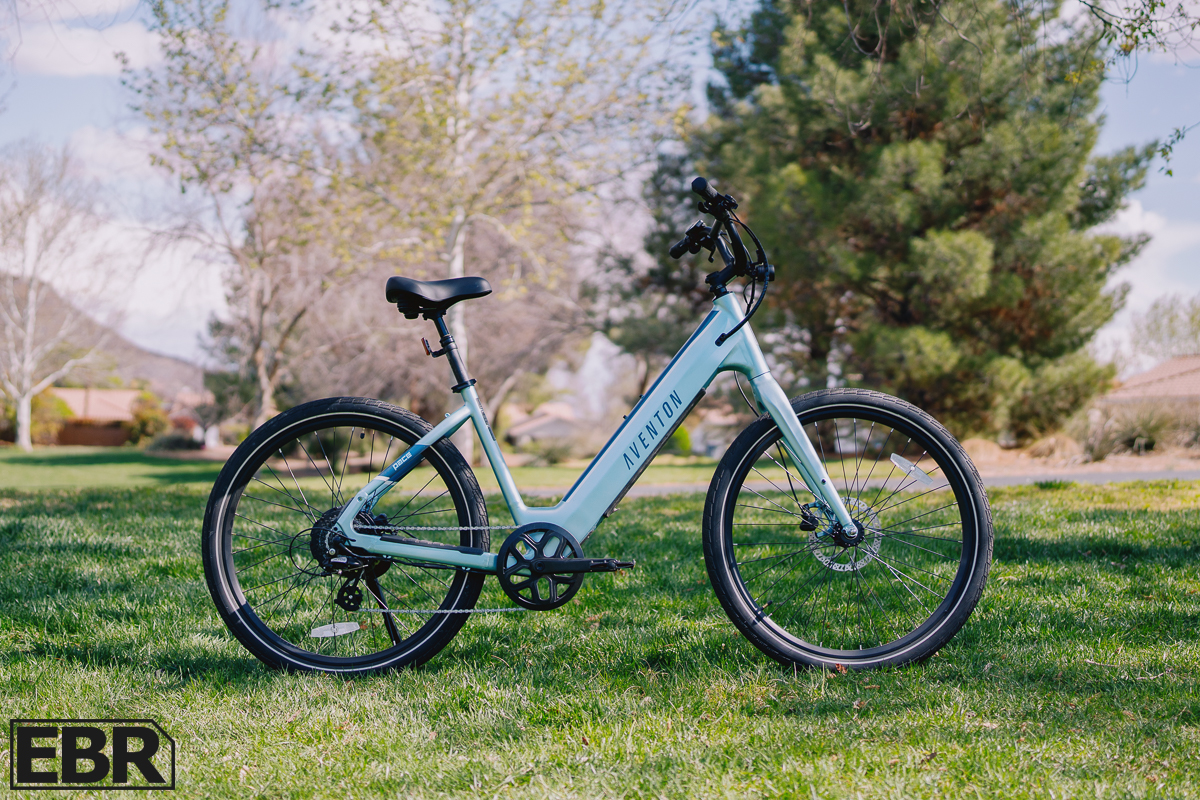


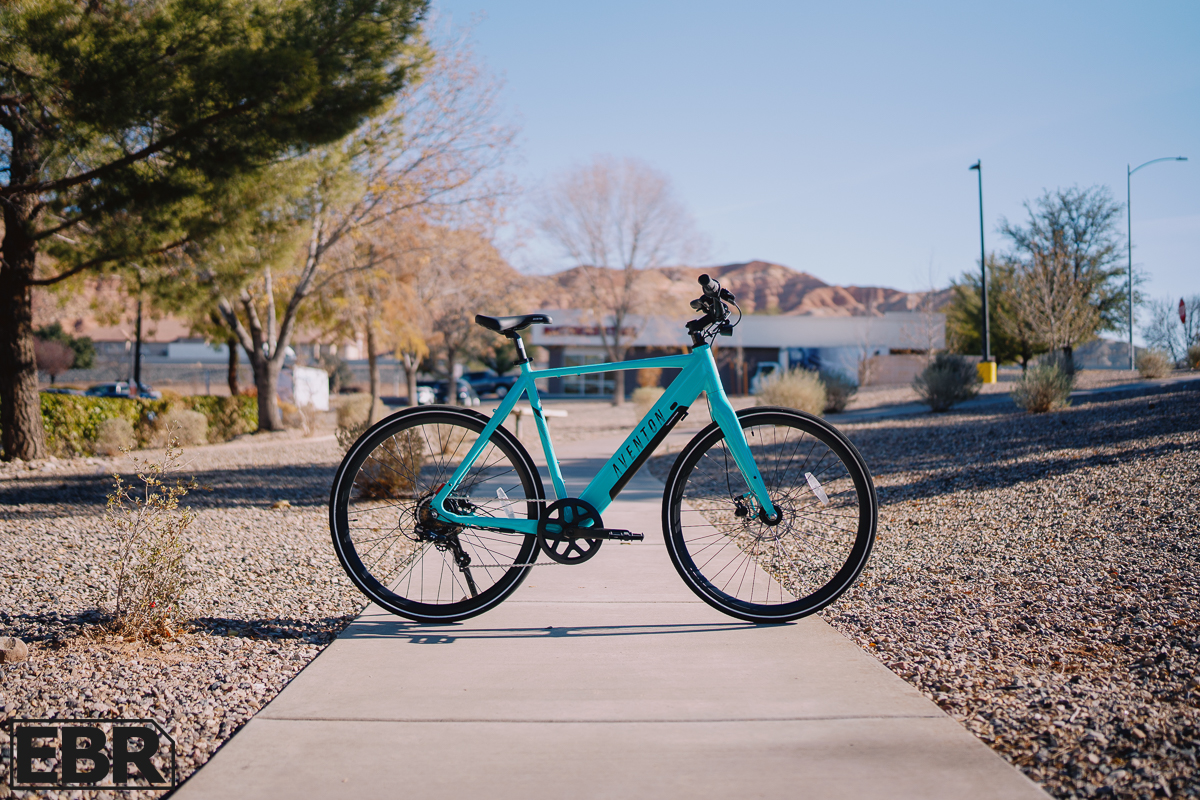
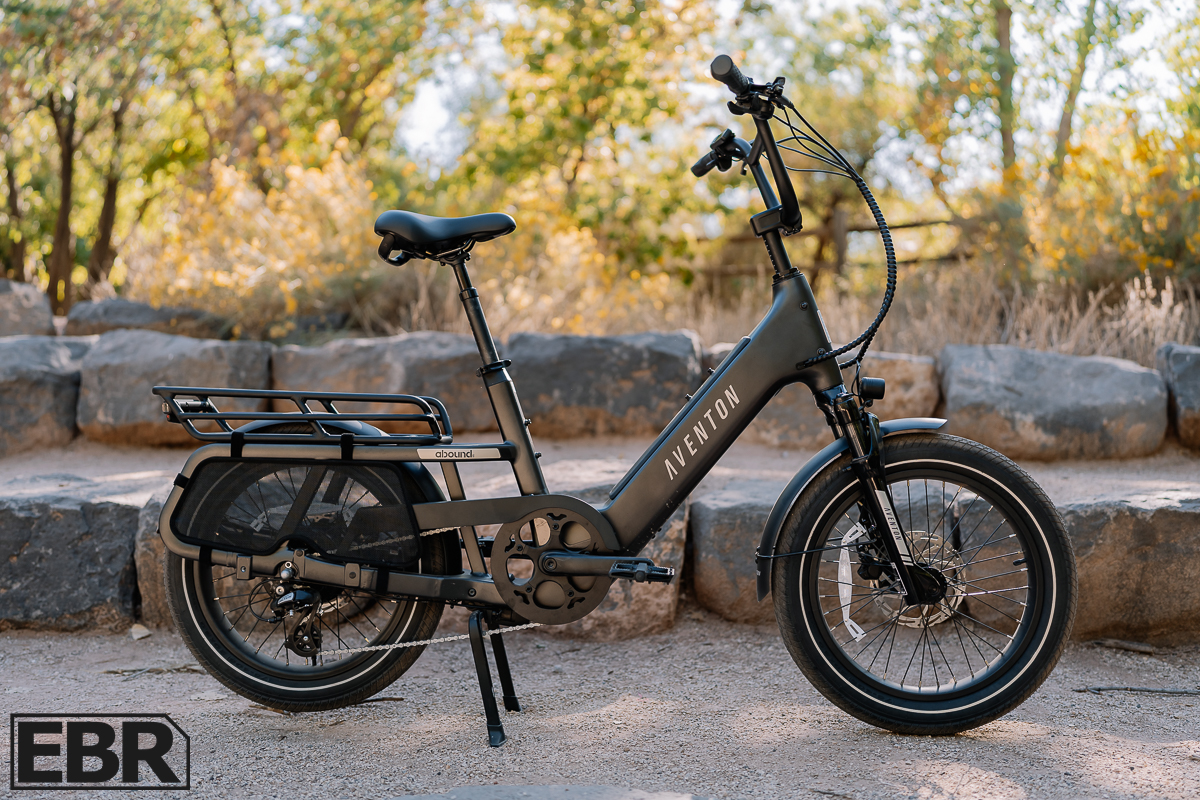
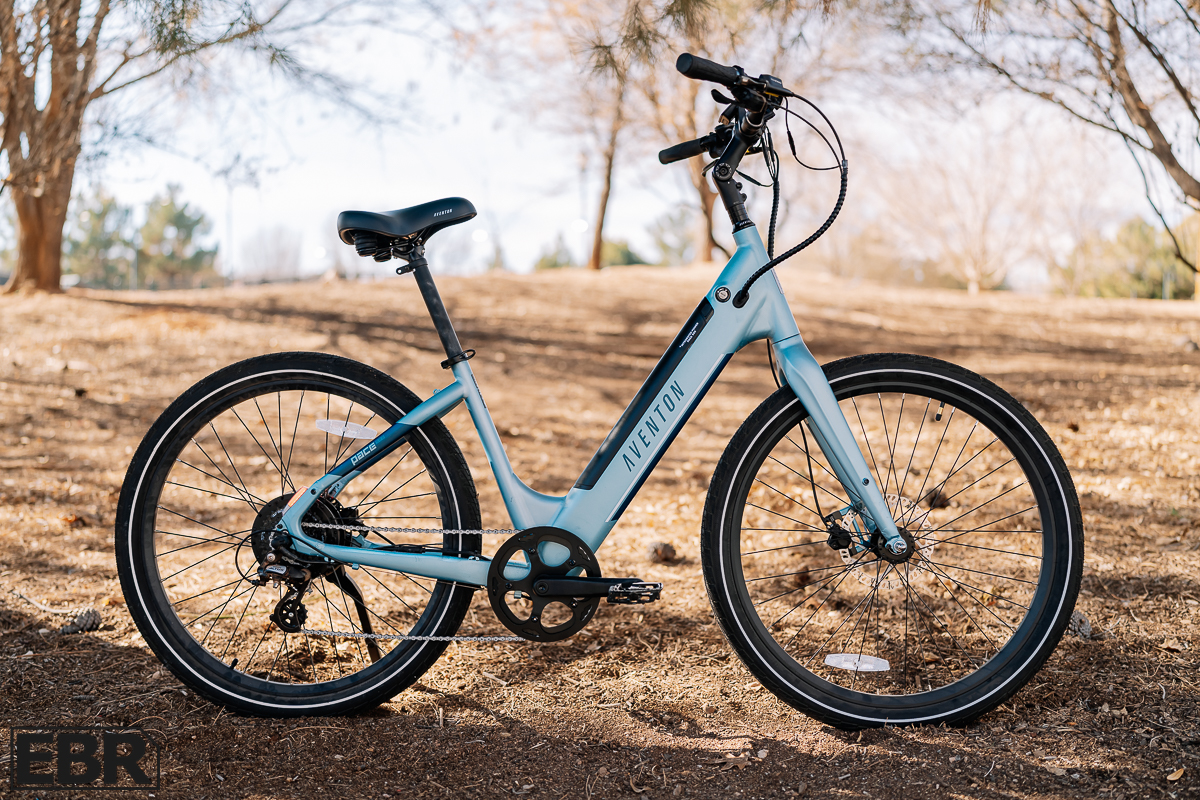
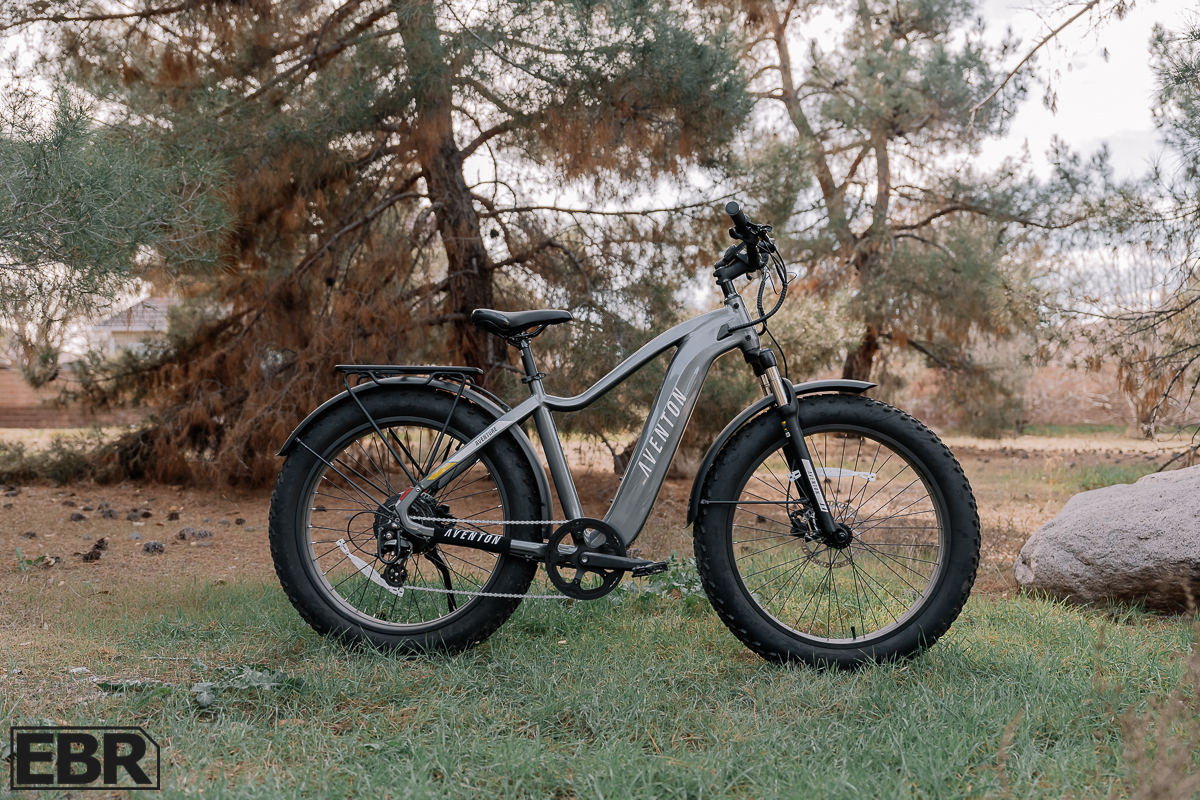
Reader Interactions